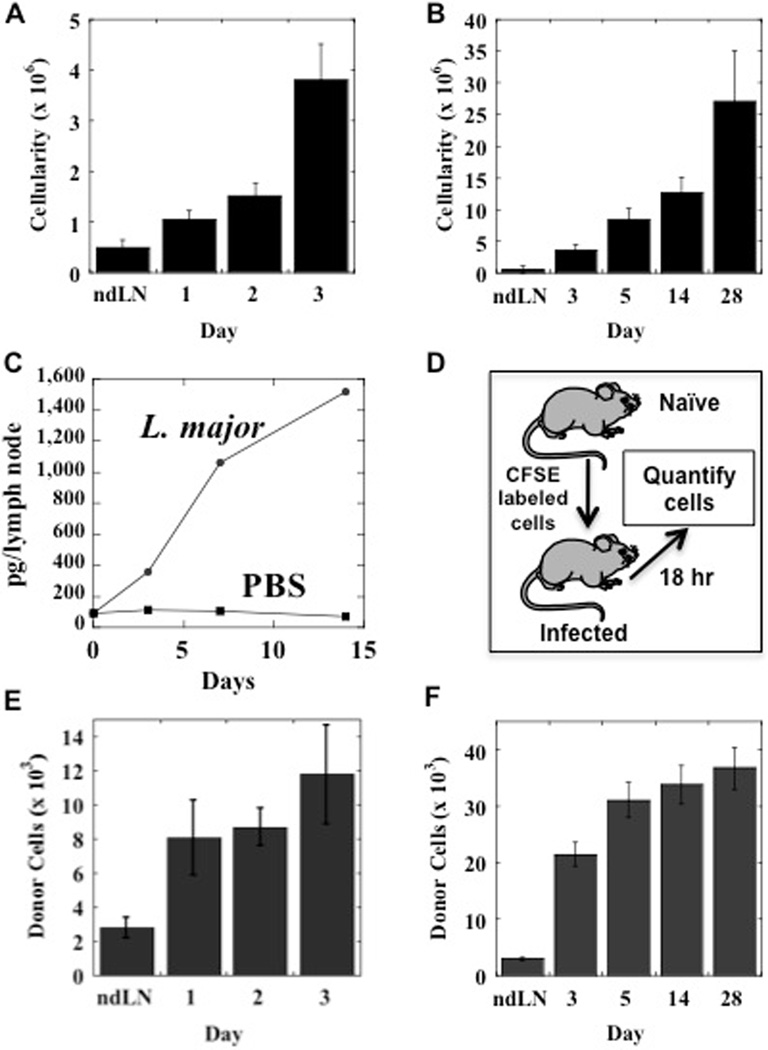Figure 1.
L. major induces increased recruitment of cells to the draining LN. C57BL/6 mice were infected with L. major and the cellularity of the draining LN was assessed from day 1 to 3 (A) or day 3 to 28 (B). These responses are compared with the cellularity of non-draining LNs (ndLN). LNs were harvested from L. major or PBS injected mice at days 3, 7 and 14. The cells were dissociated, and CCL21 levels were assessed by ELISA (C). Splenocytes from naïve C57BL/6 mice were CFSE labeled and injected iv in mice that had previously been infected with L. major, and after 18 hrs the number of CFSE labeled cells quantitated in the LN draining the site of infection by flow cytometry (D). Quantitation of donor cells during the course of L. major infection from day 1 to 3 (E) or day 3 to 28 (F). The number of cells migrating into the non-draining LNs (ndLN) did not change significantly during the dcourse of the experiment, and the average is shown. The data shown are representative of 2 or more experiments.

